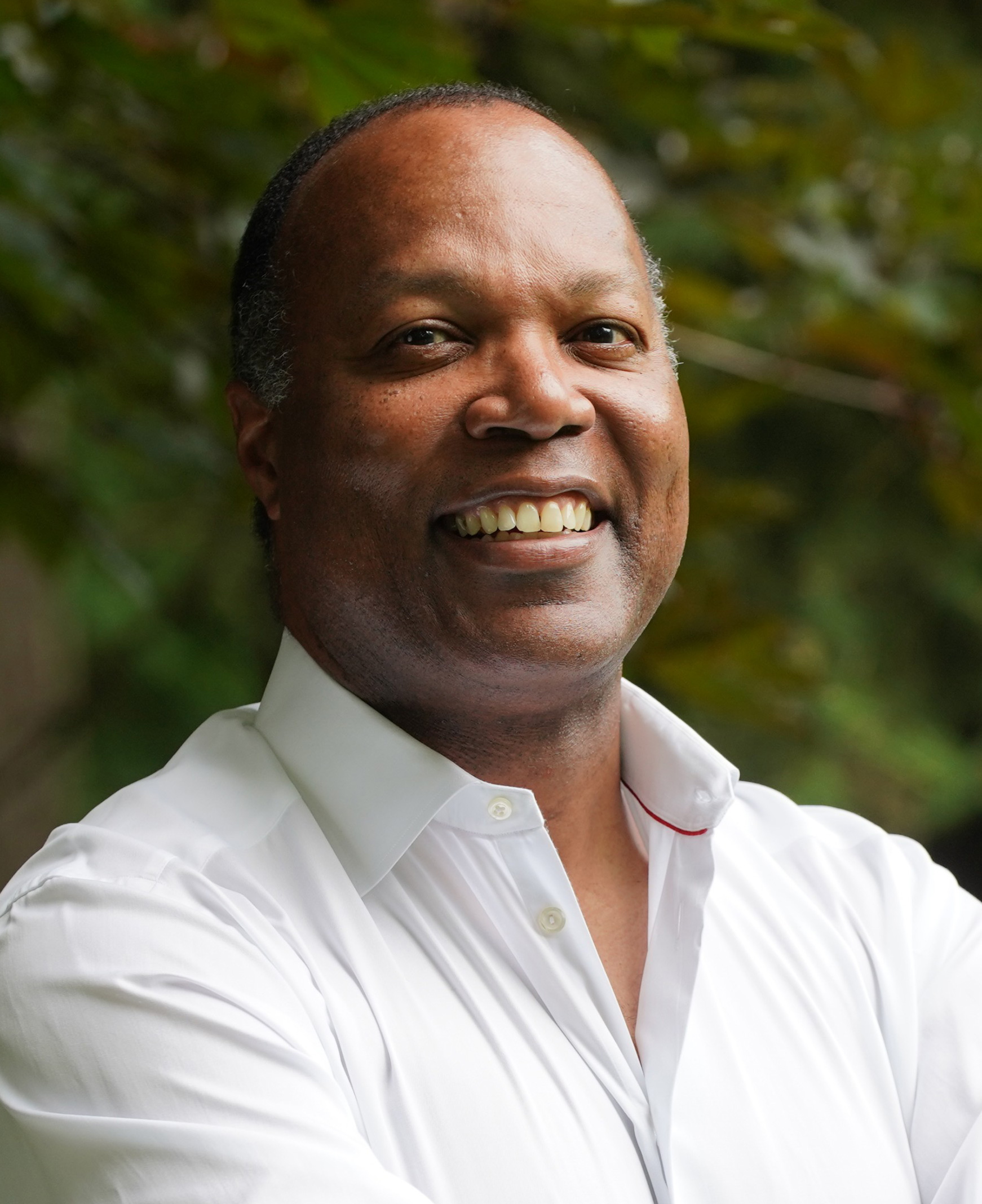
Alan Bowser dismisses the notion of a self-made man or woman. “Anybody who thinks they got where they are without the significant help of others is probably just not seeing the whole picture,” said Bowser, who is co-head of the Americas Region for Bridgewater Associates, the world’s largest hedge fund, where he oversees client relationships in the United States and Canada.
Bowser has built an impressive resume of titles in politics, nonprofits and finance that he could discuss in detail, but he’d rather talk about the mentors who helped him along the way. There are three in particular, starting with the late Judge A. Leon Higginbotham Jr., a scholar who was also one of the most prominent African American judges in the country.
Bowser was a junior at Wharton when he took a graduate course taught by Higginbotham, who was a federal appeals court judge in Philadelphia. That class, which was on race and the American legal process, led to a chance to work for Higginbotham as a research assistant.
“It was a really great opportunity for me to be close to excellence and pinnacle achievement that looked like me,” said Bowser. “I can’t tell you how powerful and important that was, especially at that point in my life. Because I think that a lot of what people gain out of college, in addition to the knowledge, is you come out with a sense of confidence, a belief that you can tackle anything.”
Bowser spoke to Wharton management professor Stephanie Creary for her Leading Diversity at Work podcast series. (Listen to the podcast at the top of this page. You can find more episodes here.) In addition to his executive position, Bowser is senior adviser for diversity and inclusion at his firm, and senior sponsor of the Bridgewater Black Network. He’s helping shape Bridgewater’s diversity and inclusion strategy, with an emphasis on attracting and retaining African-American talent to the firm.
Outside the firm, Bowser is on the board of the Robert Toigo Foundation, which prepares underrepresented talent for leadership and helps businesses create environments where those individuals can thrive. He’s also a member of 100 Black Men of Stamford, a past board member of the New York Urban League and a former senior executive at the United Negro College Fund.
“Diversity without inclusion, it’s like an airplane without lift. Literally, without that aerodynamic force on the wings, the plane doesn’t fly.”
Bowser’s tireless work in the diversity, equity and inclusion (DEI) space is motivated by a desire to give back and offer the same kind of mentorship that helped him succeed. He recalled working as chief of staff for former U.S. Rep. William H. Gray III, a Democrat from Philadelphia who spent 14 years in Congress and rose to become the House Whip. Bowser watched Gray navigate to the top of a complex institution, in a job designed to serve all kinds of people. It was another chance to see excellence in action, he said.
“You learn the most when the fire is the hottest. Working for that man was an awfully hot fire,” Bowser said. “To this day, if I were to point to one person who taught me more, that ultimately led to whatever success I’ve had, it was him.”
Bowser also called out Charlie Long, former corporate secretary of Citigroup. Long gave Bowser his first job in finance, putting him in a strategic role that gave him a broad understanding of the business and access to senior executives. Bowser’s ascent at Citigroup led to his position at Bridgewater.
“I got on the ladder because of Charlie Long,” he said. “He was probably the best sponsor I’ve had in my entire career.”
Diversity vs. Inclusion
Although diversity and inclusion are words that are often used interchangeably, Bowser drew a distinction. Diversity means representation, he said, but it doesn’t work without inclusion.
“Diversity without inclusion, it’s like an airplane without lift. Literally, without that aerodynamic force on the wings, the plane doesn’t fly,” he said. “If you extend the metaphor, inclusion is what unlocks the power of diversity.”
But getting an organization to be more inclusive is a process, starting with defining what it means to be inclusive. Citing research from Deloitte Insights, Bowser said there are four components to creating a culture of inclusion. Employees need to feel fairness and respect; value and a sense of belonging; safety and openness; and a sense of empowerment and growth.
Once the definition is established and agreed upon, firms have to do the hard work of figuring out the gaps and filling them. While top leadership is key in driving cultural change, Bowser said, it cannot be done without broad engagement from leaders at all levels.
He said that work is occurring now at Bridgewater, where there’s an effort underway to “get all of the oars in the water.”
“We’re very consciously aiming at understanding and increasing the inclusiveness in our culture,” he said. “That’s not the totality of our D&I strategy, but it’s a very important place where we’re focusing right now. And I think it’s going to be foundational for the next phase of the journey we need to go on.”
Confronting the Nonbelievers
Creary asked Bowser about one of the more difficult aspects of driving change, which is changing the hearts and minds of those who believe everything is fine with diversity and inclusion, and there’s no problem to solve.
Bowser told her that people typically tend to group into thirds around DEI. There’s a third that gets it instinctively and is on board from the start; a third that is open to it but needs a little persuading to get the oars in the water; and a third that is skeptical, indifferent or outright opposed.
Bowser recommends starting with the first group to build momentum and celebrate successes around DEI, then continuing the efforts. “Because that’s an important part of getting other people to say, ‘Hey, there’s a train that’s moving, and there are probably some reasons I might want to get on that train.’”
“There is no shortage of diverse talent that is well-prepared. The thing that is in shorter supply than we need, is opportunity.”
One way Bridgewater helps keep DEI conversations going is with its diversity speaker series, including one event that encouraged allyship. Members of the Bridgewater Black Network wrote powerful, emotional essays about their personal experiences with racism, and those stories were read aloud by allies on a company-wide video call.
“There’s no magic, and there’s no one-and-done. You have to have a sustained process and a sustained engagement to do it,” Bowser said.
He emphasized that being an ally doesn’t have to be some grand gesture. Allyship is also about supporting minority colleagues and calling out the micro-aggressions that happen every day. Bowser remembered an incident when a female employee relayed a pivotal piece of information in a group conversation, but that point was later attributed to a male employee.
“I didn’t call that out. I missed the chance to be an ally,” he said, adding that while such mistakes can happen, it’s important to recognize them and then commit to being an ally when the next opportunity arises.
Mentorship doesn’t have to be formal or top-down. Bowser also encouraged minority employees to become “reverse mentors,” which means helping white managers understand the world differently by sharing their own perspectives and stories.
Students Can Start Small
Creary said she’s always inspired by her students because they want to make the world a more equitable place. But changing the world is a daunting task, one that can quickly kill the optimism of young graduates.
Bowser urged them to start small by joining affinity groups to build a network of like-minded people. If there is no group, start one. If your company isn’t receptive, find or create a cross-industry group.
Bowser emphasized that his story of success as a Black man is not unique; it is representative. He put in the hard work, but he was also given the opportunities.
“There is no shortage of diverse talent that is well-prepared. The thing that is in shorter supply than we need, is opportunity,” he said. “Finding ways to open those paths of opportunity is something that we can all contribute to.”



